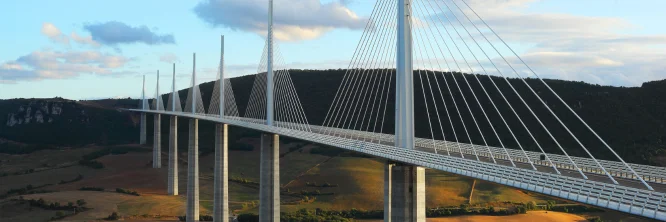Bridges and viaducts are essential structures that have shaped human civilization, connecting people and places across bodies of water, valleys, and other geographical barriers. While often used interchangeably, bridges and viaducts have distinct characteristics and purposes. This article will delve into the definitions, differences, and historical significance of these structures, exploring iconic examples such as the Millau Viaduct.
Introduction to bridges: definition and purpose
A bridge is a structure built to span physical obstacles, such as rivers, roads, or railways. Its primary function is to provide a passageway for pedestrians, vehicles, or utilities without interrupting the flow of traffic or water underneath. Bridges can vary greatly in size, design, and materials, from small footbridges to massive suspension bridges.
Introduction to viaducts: definition and purpose
A viaduct is a structure that carries a road or railway at a considerable height above ground level. Unlike bridges, viaducts are often part of a larger transportation system and are used to overcome changes in elevation or to cross valleys, ravines, or other obstacles. Viaducts are typically constructed as a series of arches or supported by piers.
Differences between a bridge and a viaduct
While bridges and viaducts serve similar purposes, there are key distinctions between the two:
-
Purpose: Bridges are primarily designed to span bodies of water, while viaducts are often used to overcome changes in elevation or to cross land.
-
Structure: Bridges can have a variety of structures, including beam, truss, arch, suspension, and cable-stayed designs. Viaducts are more commonly constructed as a series of arches or supported by piers.
-
Length: Viaducts tend to be longer than bridges, as they are often part of extended transportation routes.
What are the most impressive viaducts in the world?
The Millau Viaduct in France is often considered one of the most impressive viaducts in the world. Its towering pylons and cable-
Compartir en:






